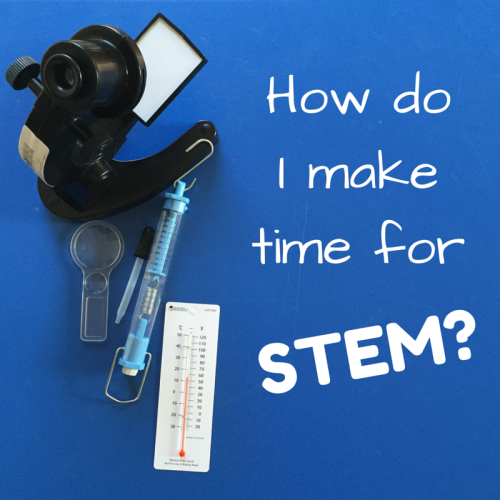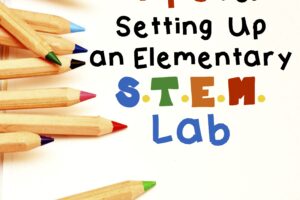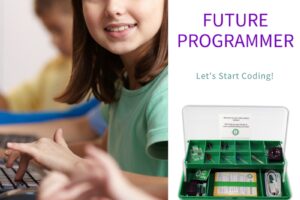
When your day is scheduled for you from start to finish, and your curriculum is planned out on a handy-dandy curriculum map that you must follow, or else, it is hard to think about adding one more thing to your day. Many teachers face this difficulty with STEM. How do I make time for it?
I asked this question: How you you make time for STEM activities and/or hands on science lessons? How do you fit them in? How do you justify the time when STEM is not on “THE test?” Some of my favorite STEM teachers/bloggers/engineers commented and shared their thoughts:
Renee Heinrich from The Science Schoolyard gives this advice: What I do is weave it into what we already have to do. For example: we are learning about water. We focused on Weathering, Erosion, and Deposition last week. This week, we are building hurricane houses with only a few items. We review how WED happens when there is severe storms. We have tornadoes and floods other places have hurricanes. We build, share, and review. We also did oil spills and pipelines to add STEM to the FOSS Water kit.
Another example is our FOSS balance and motion kit, we use the parts in the kit to make our own vehicles to push and pull using every day objects. We always tie in a picture book or non-fiction book. (Epic books and Myon are my go to’s). NGSS standards are used in kindergarten. One standard is to build something to protect from the sun. Last week we talked about how to protect us from the weather. We talked about tornadoes, lightning, wind, rain, and the sun. We made sun protectors for our mini beanie babies. We share what we made after collaboration time.
Whether you have a kit like FOSS or have to create your own science lessons, using what you are already doing in reading or math and weaving in a simple science lesson can be simple with STEM, simple supplies, and a great picture book! Check out my freebie on TPT: Engineering Connections with Picture Books: Roller Coasters.
Carol Davis from Teachers are Terrific says: “I made time for it because the science kits we had for third grade were too magnificent not to! I loved it and the kids loved it and if I had to skip math or reading one day, then we did science. I could write a novel about the benefits I see with STEM that are not testable, but are real life skills. If you are looking for more info from Carol, she has a series of blog posts for teachers who are just getting started with STEM: So…Are You Thinking About Trying STEM?
Wendy Goldfein, one of the creators of Get Caught Engineering reminds us that STEM should be: a great addition to the classroom, but not an “add-on” to an already overloaded program. Over the years we have found ways to integrate engineering lessons into history, math, health, art, and of course science. But literature has been our biggest STEM integration success due to the fact that literature is an integral part of the elementary school curriculum and usually teachers have a large block of time for language arts. Literature has the potential to present situations that can challenge students’ imaginations. Stories can serve to encourage student to begin to problem solve, generate design proposals, and make connections to engineering. So how do we start? We begin with a “what if…?” Check out this post about Enchanted Engineering projects from Get Caught Engineering to read more about incorporating STEM into fairy tales.
Meredith Anderson of Momgineer says: It definitely takes more time and prep to tie in the math and science. I also think it’s important that STEM activities tend to draw on creative problem solving, which can be an extremely beneficial test-taking strategy! When students are posed a question they may not immediately know the answer to, they can use their critical thinking skills and creative problem solving techniques to arrive at the best answer. For my upper elementary resources, I include relevant engineering and science terminology to help build technical vocabulary or problems to apply their knowledge. In applying the knowledge, it’s much more obvious whether the students understand the material or are just following an algorithm they learned. For lower elementary, I often include stories so that students are practicing reading skills. I always introduce the “tough concepts” at the start of the STEM activity, because that is when the students are most engaged. Then, when they are applying those principles, I try to point out the physical manifestation of those principles!
Brooke Brown at Teach Outside the Box says: It just takes a little more effort and time to dig deeper into the science and math behind the engineering. She warns us to be careful of just pulling out the materials and making it a free for all. Brooke has some tips for Simplifying STEM for your younger engineers here. And you can find tips for setting up a STEM Center in your classroom here.
Sarah Wiggins from More Than a Worksheet says: To make time for STEM, I re-evaluated how I spent my science time. You can read about it in more detail here: Rethinking Science Time. I realized I was spending way too much time on ineffective vocab strategies, textbook, and workbook activities. I changed my instruction time to less teacher talking time and more students-doing-science time. I would do a quick mini lesson, maybe 5 minutes to introduce a concept, and then we would do a hands on experiment, engineering task, or investigation.
Do you have any tips for fitting STEM in? Feel free to share in the comments! We’d also love to hear your burning questions about STEM!
Happy STEM-ing!
Sarah




Leave a Reply
Your email is safe with us.